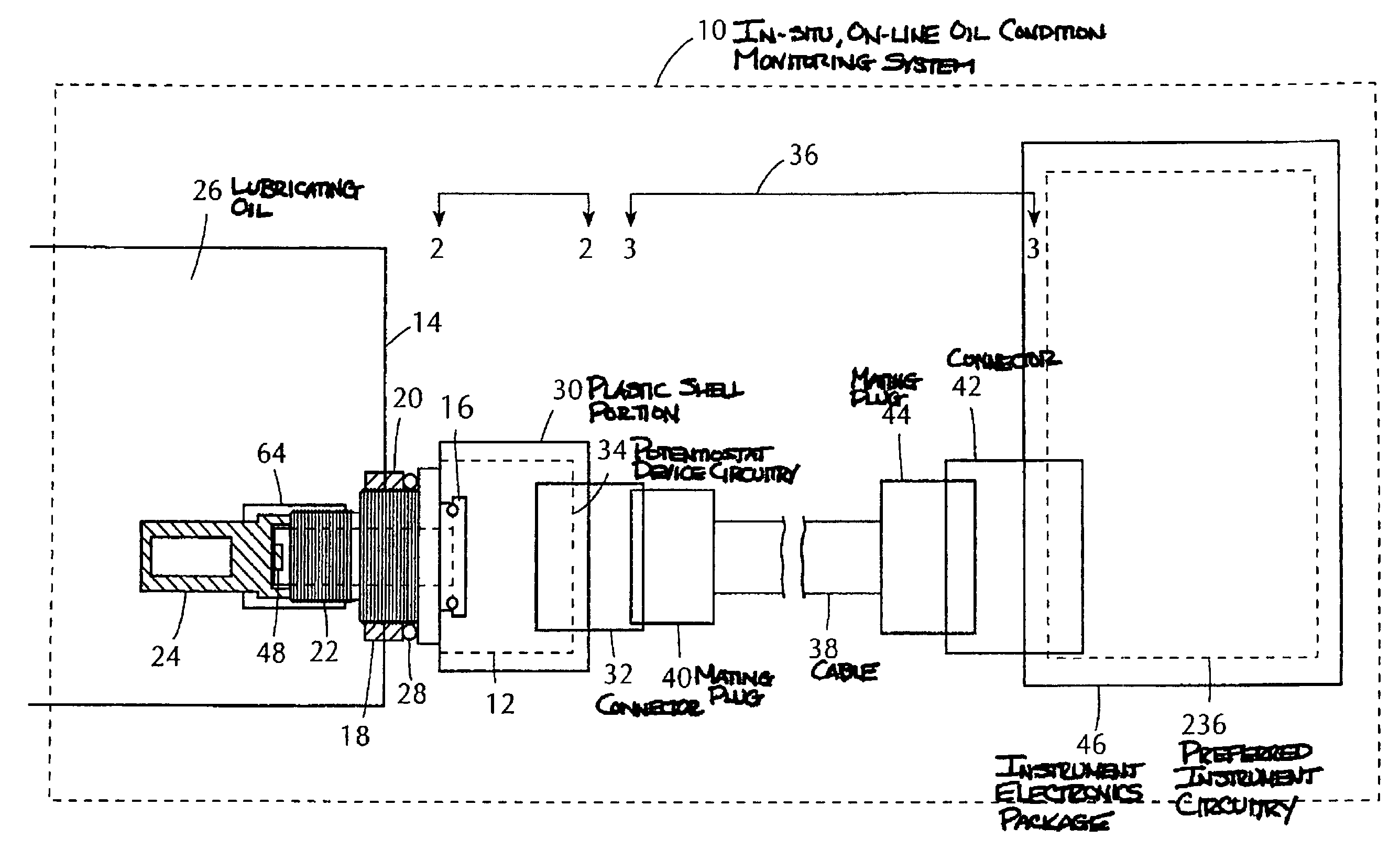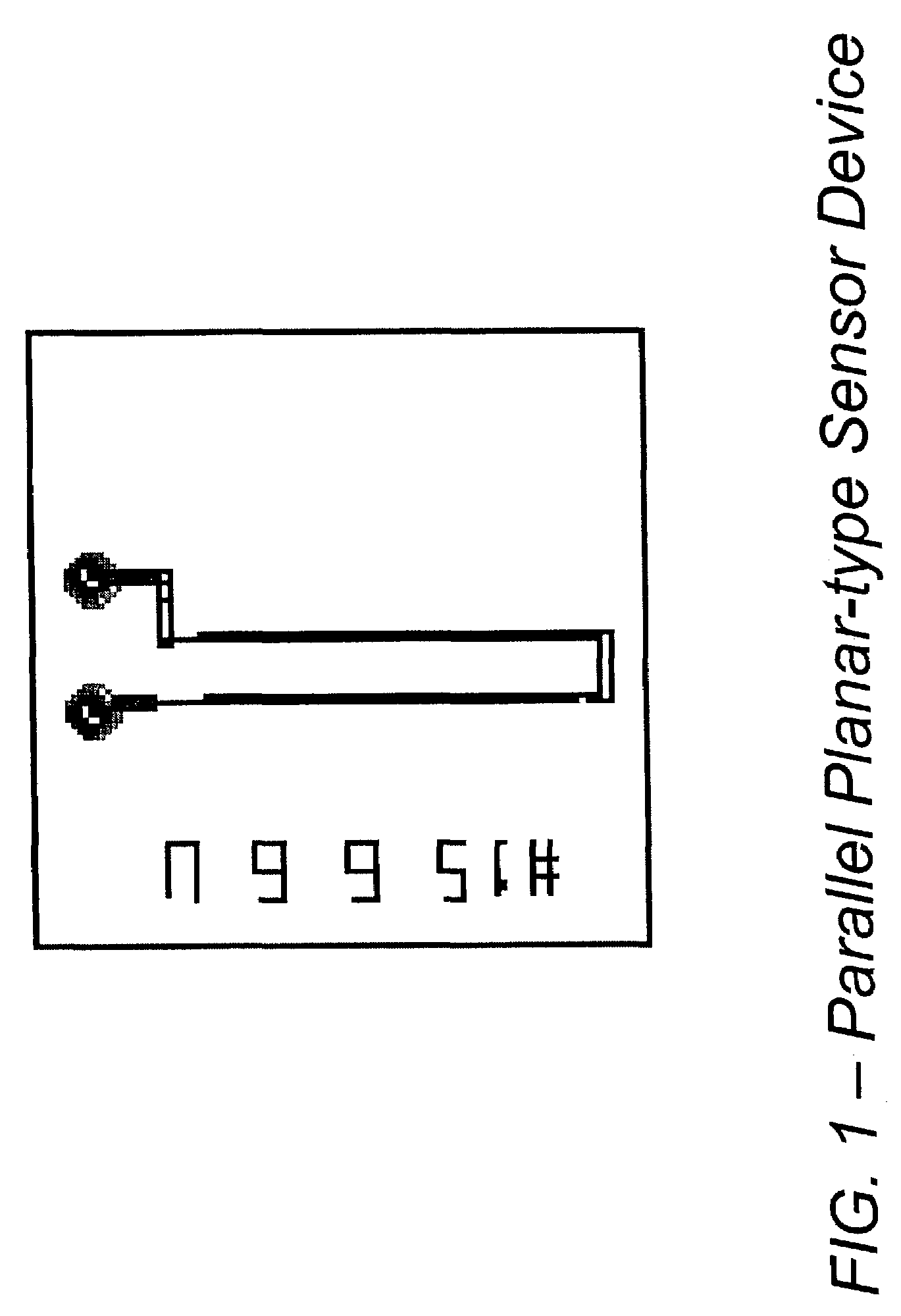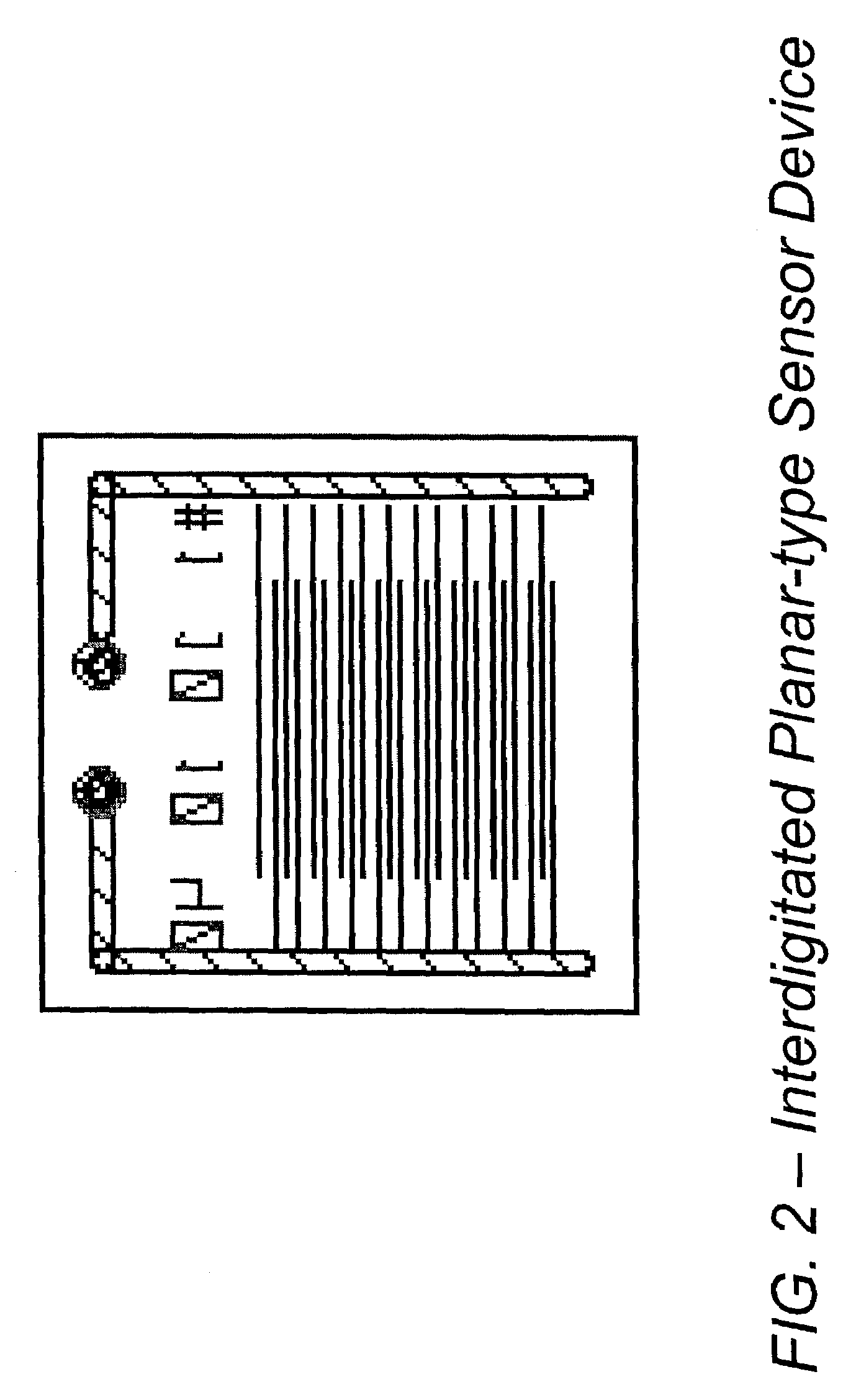On-line oil condition sensor system for rotating and reciprocating machinery
a technology of oil condition sensor and rotating reciprocating machinery, which is applied in the field of method and insitu sensing system, can solve the problems of reducing the ohmic resistance of oil, breaking down, and formation of acidic compounds such as nitric and sulfuric acids in the oil basestock, and achieves superior measurement techniques, overall repeatability, and superior performance.
- Summary
- Abstract
- Description
- Claims
- Application Information
AI Technical Summary
Benefits of technology
Problems solved by technology
Method used
Image
Examples
example i
[0118]As highlighted in FIG. 14, a bench-level test protocol was carried out over a wide range of oscillation frequencies to determine at what point on a Bode-type plot the greatest desirable change was produced in the magnitude impedance Z—that is, for two comparison oils. The three points of direct comparison shown in FIG. 14 were based upon electrochemical sensor data that was taken relative to a common fresh sample of Pennzoil 10W-30 automotive oil and a common used sample of the same stock—with each of the six output values derived from the same experiment. Very importantly, the data specified for the high and middle frequency range columns are representative of, in addition to U.S. Pat. No. 4,646,070 of Yasuhara, et al., said prior art in U.S. Pat. Nos. 4,733,556 and 5,540,086 as well as 5,274,335, respectively.
[0119]Given the three comparison oscillation frequencies, it can be seen that electroanalytical techniques in accordance with the current invention are far superior to ...
example ii
[0120]Electrochemical measurement and data analysis techniques in accordance with the present invention have been tested both at the bench-top level and on a fully operational internal combustion engine test-stand. Specifically, in-situ sensing capabilities have been tested & verified for the successful analysis of authentic fresh and used lubricating fluids, as well as laboratory-stressed crankcase oils. The candidate oil formulations that have been studied for determining quantitative levels of oil degradation, water contamination, and fuel dilution include: (1) locomotive diesel engine fluids, (2) automotive crankcase oils, and (3) heavy-duty, diesel truck engine oils. Importantly, for all of the vocation-specific oils that have been examined for desired oil degradation and contamination monitoring capabilities, it has been empirically documented that electrochemical measurement and data analysis techniques in accordance with the invention herein are highly sensitive to even subt...
example iii
[0122]In order to study the electrochemical behavior of the two-electrode sensing devices over long-term applications of in-situ analysis, a custom-built test apparatus has been employed to stress engine oils in the laboratory. What was intended to be achieved with this unique bench-top apparatus was a highly controllable experiment that would closely parallel the physical and chemical phenomena encountered in operational, in-service engine conditions. Specifically, an overbased Ethyl-brand of railroad oil was stressed continuously over a 120-hour period by introducing oxygen at a rate of 5.0 L per hour through a sparge tube positioned below the surface of 1.2 L of oil sample maintained at 320° F. The respective oxidation cell further contained iron, copper, and lead coupons (1″×1″ square pieces) to serve as oxidation catalysts and simulate the metallurgical conditions of an internal combustion engine. As such, the physical and chemical breakdown of the test oil could then be monito...
PUM
 Login to View More
Login to View More Abstract
Description
Claims
Application Information
 Login to View More
Login to View More - R&D
- Intellectual Property
- Life Sciences
- Materials
- Tech Scout
- Unparalleled Data Quality
- Higher Quality Content
- 60% Fewer Hallucinations
Browse by: Latest US Patents, China's latest patents, Technical Efficacy Thesaurus, Application Domain, Technology Topic, Popular Technical Reports.
© 2025 PatSnap. All rights reserved.Legal|Privacy policy|Modern Slavery Act Transparency Statement|Sitemap|About US| Contact US: help@patsnap.com



